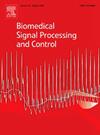FCS-TPNet: Fusion of fNIRS chromophore signals to construct temporal-spatial graph representation for topological networks
IF 4.9
2区 医学
Q1 ENGINEERING, BIOMEDICAL
引用次数: 0
Abstract
Functional near-infrared spectroscopy (fNIRS) is a non-invasive, portable brain imaging technology capable of objectively reflect cognitive states. Recently, Graph Convolutional Networks (GCNs) have gained prominence for exploring functional connectivity patterns between brain regions to identify cognitive states. However, current GCNs used for fNIRS ignore the delayed hemodynamic responses and the correlated information between HbO and HbR when constructing fNIRS graph representations. Additionally, previous study without considering the dynamic nature of inter-channel relations may not adequately capture the changes of brain network connectivity patterns. To address these issues, we introduce an innovative neural network, named FCS-TPNet. First, we propose a dual-signal hemodynamic information interaction module to learn hemodynamic features with latency-based adaptive convolutional kernels, and capture the correlation between HbO and HbR by point-wise convolution. Then, we construct a dynamic graph convolution module to obtain complex topological patterns between channels by continuously updating learnable parameters. Several experiments are performed to assess the performance of the proposed model in two-class tasks (mental arithmetic, MA and word generation, WG) and ternary scenarios task (UFFT). In 5 × 5-fold cross-validation experiments, FCS-TPNet achieves the best average accuracy of 79.16 % and 74.53 % in MA and WG, respectively. For UFFT, FCS-TPNet obtains highest classification results of 75.82 %. In subject-independent experiments, our model achieves best accuracy of 81.84 %, 78.21 % and 78.40 % on MA, WG and UFFT, respectively. Ultimately, the results present the efficiency and generalization ability of the proposed model in different cognitive tasks.

求助全文
约1分钟内获得全文
求助全文
来源期刊

Biomedical Signal Processing and Control
工程技术-工程:生物医学
CiteScore
9.80
自引率
13.70%
发文量
822
审稿时长
4 months
期刊介绍:
Biomedical Signal Processing and Control aims to provide a cross-disciplinary international forum for the interchange of information on research in the measurement and analysis of signals and images in clinical medicine and the biological sciences. Emphasis is placed on contributions dealing with the practical, applications-led research on the use of methods and devices in clinical diagnosis, patient monitoring and management.
Biomedical Signal Processing and Control reflects the main areas in which these methods are being used and developed at the interface of both engineering and clinical science. The scope of the journal is defined to include relevant review papers, technical notes, short communications and letters. Tutorial papers and special issues will also be published.
 求助内容:
求助内容: 应助结果提醒方式:
应助结果提醒方式:


